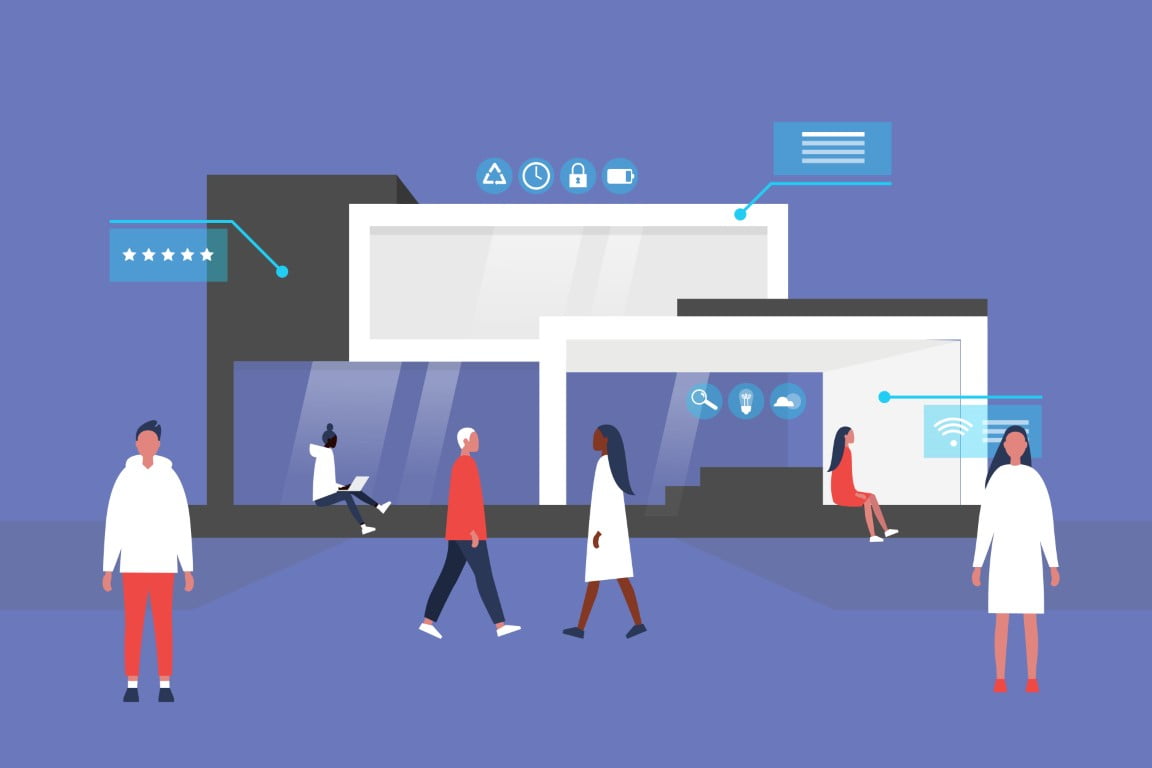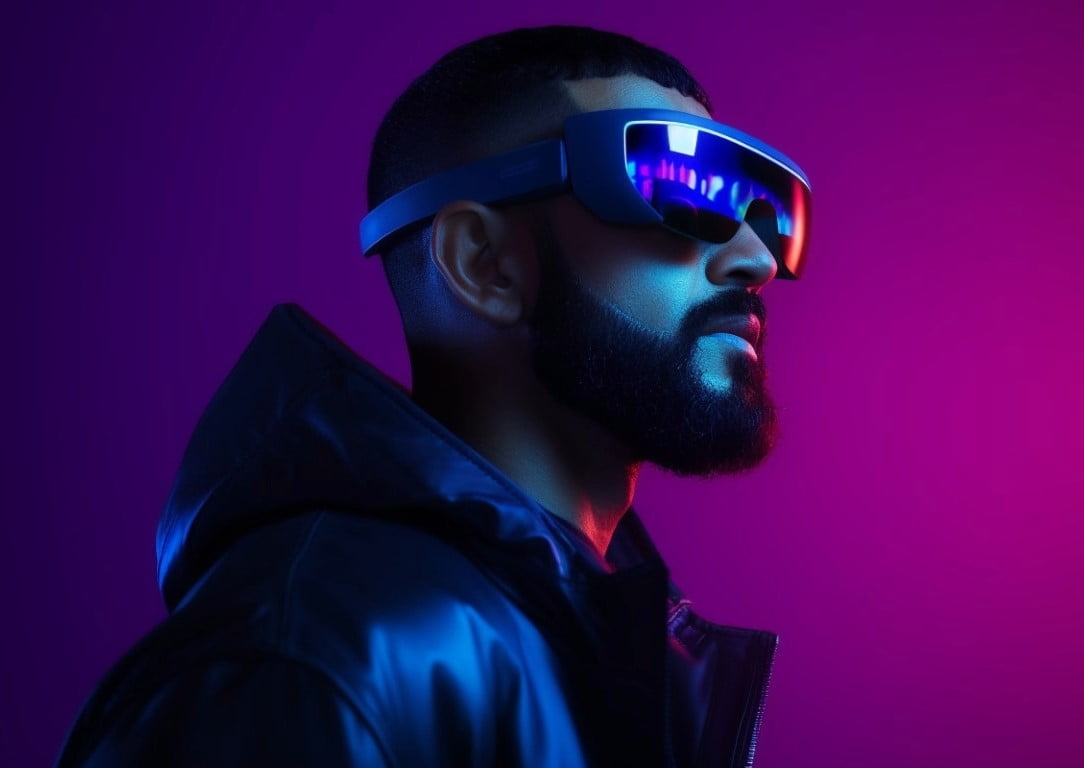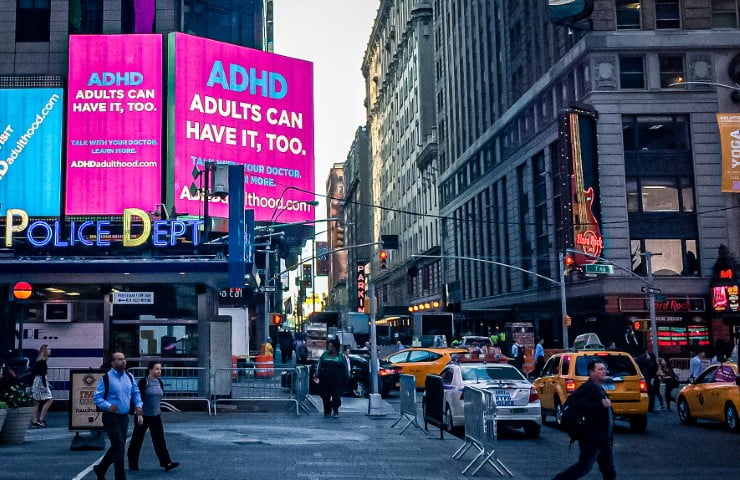How is Computer Vision Changing AI for Good?
Table of Contents
Intro to Computer Vision
Mariano was a young developer in Costa Rica who had a passion for understanding the world around him and how he could use technology to make sense of it. He soon became fascinated with Computer Vision and its potential applications, so he set out to explore this incredible field of Artificial Intelligence. Mariano quickly realized that image processing was key to computer vision, as it allowed him to extract meaningful information from images and videos. But image processing alone wasn’t enough; Mariano also needed advanced algorithms and techniques to analyze and understand visual data in order to get useful results.
This is when Mariano stumbled upon deep learning, a revolutionary machine learning technique that enabled him to create powerful models that could recognize objects in images and videos. With deep learning, Mariano was able to take image recognition to the next level and develop incredible applications powered by computer vision. Today, Mariano’s passion for Computer Vision has paid off; he is now a world-renowned expert in image processing, object recognition, and deep learning. And thanks to his pioneering work, AI is revolutionizing the way we perceive and interact with the world around us.
Applications for Computer Vision
Computer vision has countless applications in various industries, including medicine, manufacturing, retail, security and surveillance, automotive, robotics, agriculture, and many more. In the medical field, for example, computer vision can be used to detect anomalies in medical images faster than ever before and image processing algorithms can be used to identify tumors or other abnormalities that may have been previously missed by manual inspection. In the retail industry, image recognition systems can be utilized for product recommendations on websites or image search engines like Google Images. And in the agricultural industry, image-processing techniques are used to monitor crops for signs of disease or pests.
Facial Recognition systems are becoming increasingly prevalent in security and surveillance applications, allowing for quick and accurate identification of individuals. And image processing techniques are also being used in autonomous vehicles to detect obstacles and navigate roads safely.
Brief History of Computer Vision
The history of computer vision can be traced back to the early 1950s when scientists first began exploring image processing and object recognition. From the first image processing programs created in the 1960s to the development of deep learning algorithms in the 1990s, computer vision has evolved significantly over time.
Computer Vision is a field of Artificial Intelligence (AI) that deals with the interpretation and understanding of visual information from the real world. It involves image processing, deep learning, object recognition, and other advanced techniques to analyze and process images and videos in order to extract meaningful information from them. Through this technology, we can now perceive the world around us in ways humans never could before. In recent years, computer vision has made remarkable progress and is playing a critical role in the development of AI-driven applications for various industries. With its powerful capabilities, it is no wonder why computer vision continues to evolve at an exponential rate – because it truly offers limitless possibilities.
In the early days of computer vision, researchers focused primarily on the development of algorithms for basic image-processing tasks, such as edge detection and segmentation. One of the first milestones in the history of computer vision was the development of the Hough Transform, a technique for detecting lines and curves in images, in the late 1950s. This breakthrough paved the way for further advances in image processing, such as the development of the Kalman filter, which was used to track objects in images, and the Harris corner detector, which was used to detect points of interest in images.
Premium SSL (5-Site)
In the 1980s and 1990s, computer vision took a significant step forward with the advent of digital imaging and the growth of computer processing power. During this time, researchers developed a wide range of techniques for analyzing images, including feature detection, object recognition, and motion analysis. These advances made it possible to use computer vision in practical applications, such as industrial inspection, traffic analysis, and medical imaging.
In recent years, computer vision has been transformed by the rise of deep learning and convolutional neural networks (CNNs). These powerful machine-learning techniques have dramatically improved the accuracy and performance of computer vision algorithms, making it possible to solve previously unsolvable problems. For example, deep learning has enabled researchers to develop algorithms for recognizing objects in images and videos with near-human accuracy, making it possible to use computer vision in a wide range of applications, including autonomous vehicles, security systems, and medical diagnosis.
Fundamentals of Computer Vision
At its core, computer vision is about image processing and object recognition. It involves the use of advanced algorithms to interpret and analyze digital images in order to extract meaningful information from them. Image processing techniques such as image segmentation and feature extraction enable computers to recognize objects in a scene by recognizing shapes and patterns within an image. Deep learning brings image recognition one step further by using neural networks to learn how to recognize objects on their own. This type of artificial intelligence can be used for many applications such as voice recognition, image search engines, facial recognition systems, autonomous vehicles, robotics, and more.
Image Processing and Analysis
Image processing is the practice of manipulating and transforming digital image data in order to extract meaningful information from them. This involves analyzing image pixels and applying algorithms such as image segmentation, feature extraction, and object detection to recognize patterns in a scene. Image processing and analysis is a critical step in computer vision, as it provides the foundation for understanding and interpreting visual information from the real world. The goal of image processing is to transform raw images into a form that can be easily analyzed and interpreted by computer algorithms.
Image processing techniques such as filtering, thresholding, and morphological operations are used to remove noise and simplify the image, making it easier for computer algorithms to identify and extract meaningful information. Additionally, image processing techniques can be used to enhance the quality of images, such as increasing contrast or removing shadows, making it easier for algorithms to identify and classify objects.
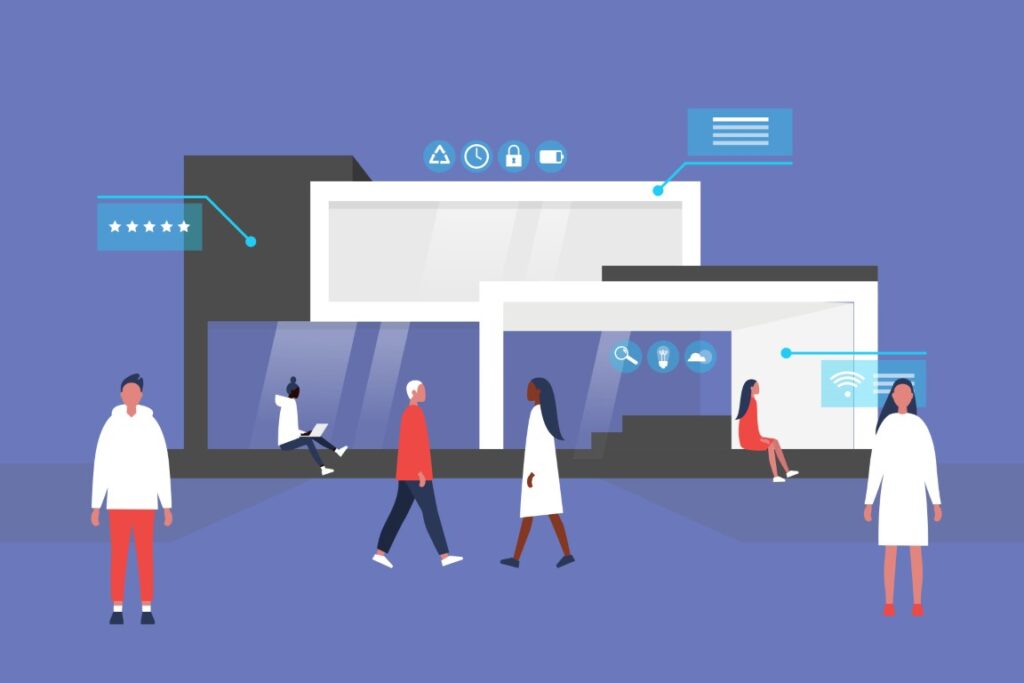
Feature Detection and Extraction
Feature detection and extraction is the process of identifying image features such as lines, edges, shapes, and textures. This allows computers to recognize objects in a scene by detecting specific characteristics in an image. One of the most commonly used image processing techniques for this is image segmentation, as it enables the extraction of meaningful information from images. The goal of feature detection and extraction is to identify distinctive attributes of an image, known as features, which can then be used to train computer vision algorithms. One of the most commonly used feature detection techniques is edge detection, which involves identifying boundaries between different objects or regions in an image. Edge detection algorithms typically work by detecting changes in intensity or color in an image and then tracing these changes to identify the edges of objects.
Another popular feature detection technique is corner detection, which involves identifying points in an image that are corners or intersections of multiple edges. Corner detection is useful because corners tend to be distinctive and stable features, and they can be used to identify objects even when they are partially obscured or viewed from different angles. Once features have been detected, they are then extracted and represented in a compact form, such as a feature vector. The resulting feature vectors can then be used to train machine learning algorithms, such as deep learning algorithms, which can be used to recognize and categorize objects, detect changes in the environment, and perform a variety of other tasks.
Object Detection and Recognition
Object detection and recognition is the process of recognizing objects in a scene by applying image classification algorithms. This involves classifying images into specific categories based on image features such as color, shape, size, and texture. Deep learning has made this type of image recognition much more powerful with its ability to learn from image data without human intervention. Object detection algorithms typically work by sliding a window across the image, evaluating each region to determine if it contains an object of interest. When an object is detected, the algorithm can then classify the object based on its features, such as its shape, size, or color.
Techniques and Algorithms Used in CV
Computer vision algorithms and techniques are used to process image data in order to extract meaningful information from them. Some of the most commonly used image processing techniques include image segmentation, feature extraction, object detection, image classification, image recognition, and image tracking.
Convolutional Neural Networks (CNNs)
Convolutional Neural Networks (CNNs) is a type of deep learning algorithm that is widely used in computer vision and image processing. They are designed to automatically learn features and representations from image data, making them well-suited for tasks such as object recognition, image classification, and object detection. A CNN is composed of multiple layers, each of which performs a specific task. The first layer of a CNN typically performs convolution operations, which involve sliding a small filter or kernel over the input image and computing a dot product between the filter and the portion of the image it is currently overlapping. This operation is repeated multiple times, with the filter sliding over different regions of the image, to produce a series of feature maps.
These feature maps are then passed through subsequent layers, which may perform additional convolution operations, pooling operations, or fully connected operations. Pooling operations are used to down-sample the feature maps, reducing their size and making the features more robust to changes in the image. Fully connected layers are used to make predictions based on the features learned by the network. The weights and biases of the network are adjusted during training, using a labeled dataset, to minimize the difference between the network’s predictions and the true labels. Over time, the network learns to recognize and categorize objects based on their features, allowing it to make accurate predictions on new, unseen data.
The New York Sweatshirt
Image Segmentation and Object Localization
Image segmentation is a computer vision technique used to divide a digital image into multiple sections, or “segments”. This allows computers to recognize objects in a scene by recognizing and isolating individual parts of an image. Object localization is a related technique used to identify the position of a particular object in a given image. Image segmentation and object localization are important tasks in computer vision as they allow for the division of an image into its constituent parts and the localization of objects within the image.
Image segmentation involves dividing an image into multiple segments or regions, each of which corresponds to a distinct object or part of the image. This allows for the extraction of meaningful information from an image and the analysis of individual objects within the image. Image segmentation can be used to separate foreground and background regions, to separate individual objects within an image, or to separate different parts of a single object.
Object localization, on the other hand, involves the identification of the location and extent of objects within an image. This can be used to detect the presence and location of objects, to track their movement over time, or to provide additional information about the objects, such as their size, shape, or orientation. The combination of image segmentation and object localization is often used in a wide range of applications, including autonomous vehicles, security systems, and medical diagnosis. For example, in an autonomous vehicle, image segmentation and object localization can be used to identify and track other vehicles on the road, to identify road signs, or to detect obstacles in the vehicle’s path.
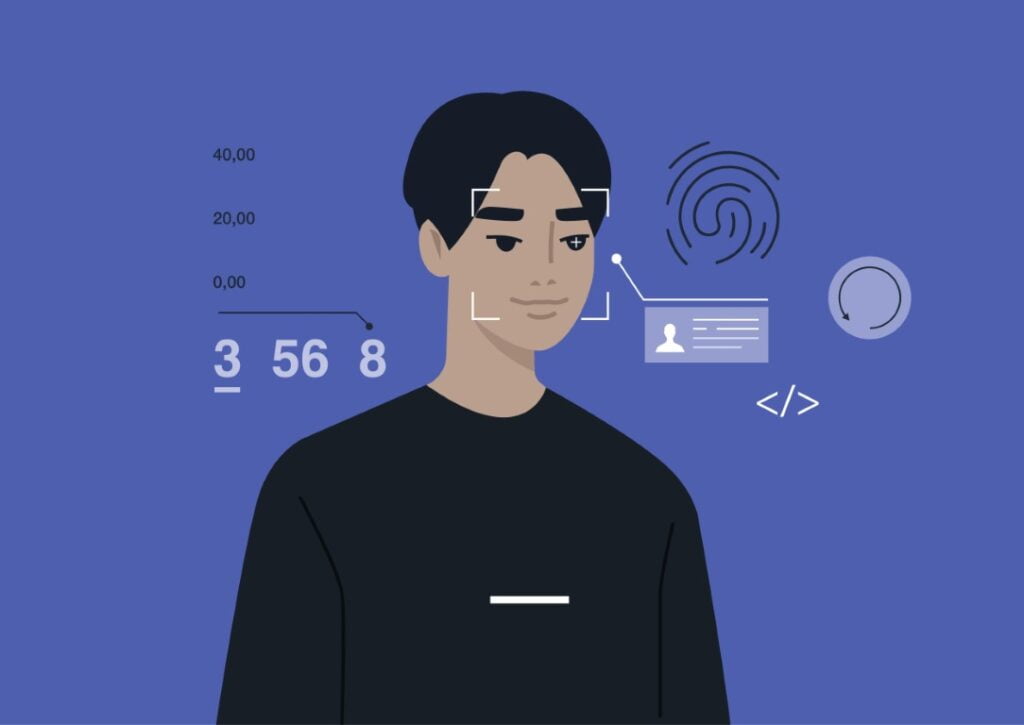
Applications of Computer Vision
Computer vision has a wide range of applications across various industries such as healthcare, security, robotics, and autonomous vehicles. Some of the most common applications include facial recognition systems, automatic license plate readers, medical imaging analysis, surveillance cameras, and more. It can also be applied to more creative tasks such as video editing and animation.
Image and Video Processing
Image and video processing is a field of computer vision that deals with the analysis, manipulation, and enhancement of digital images and videos. This includes a variety of applications such as object tracking, image stitching, automatic color correction, and more.
Object Tracking and Motion Analysis
Object tracking and motion analysis are computer vision techniques used to analyze a sequence of images or a video in order to recognize objects and track their movements. This is a very powerful tool for security, surveillance, and autonomous vehicle applications as well as medical imaging analysis. Image and video processing can be used to analyze surveillance footage and detect potential security threats, such as intruders or criminal activity. It can also be used to track individuals or vehicles, providing valuable information to law enforcement agencies.
Autonomous Vehicles
Autonomous vehicles use a combination of computer vision algorithms and sensors such as cameras, laser range finders, radar, and more to detect objects in a scene. This allows the vehicle to navigate safely without human intervention by recognizing pedestrians, other cars, traffic signals, lane markings, and more. Image and video processing is critical for the development of autonomous vehicles, allowing the vehicle to detect and track other vehicles, road signs, and obstacles, and make informed decisions about navigation and safety.
Facial Recognition and Biometrics
Facial recognition and biometrics are computer vision techniques used to identify a person based on their face. This is a powerful tool for security, surveillance, and access control applications. It can also be used for a variety of other tasks such as searching a database of faces or verifying a person’s identity. Image and video processing can be used to analyze medical images, such as X-rays, MRI scans, and CT scans, to assist in the diagnosis of various medical conditions. It can also be used to monitor vital signs, such as heart rate and respiration, to detect potential health problems.
Challenges and Limitations
Computer vision is a rapidly evolving field with a number of challenges and limitations. Low-light conditions, changing backgrounds, occlusions, and a diverse range of objects can all make it difficult for a computer to accurately identify and classify objects in a scene. Additionally, computer vision algorithms are limited by the amount of data they can process at any given time, making it difficult for them to handle large or complex scenes.
List of Computer Vision Limitations
Complexity of the Image: The complexity of an image can pose significant challenges for computer vision systems. This includes the presence of noise, variations in lighting and shading, and a large number of objects and features that may be present within an image.
Ambiguity: The interpretation of an image can often be ambiguous, with multiple potential solutions for the same image. This can result in incorrect or inconsistent results and makes it difficult to design computer vision systems that can provide reliable and accurate results.
Computational Complexity: Image and video processing is a computationally intensive task, requiring large amounts of processing power and memory. This can limit the scalability and real-time performance of CV systems, especially for high-resolution images and videos.
Limited Training Data: The accuracy and performance of computer vision systems depend heavily on the quality and quantity of the training data that is available. The lack of high-quality, annotated training data can limit the development and performance of computer vision systems.
Scalability and Performance
Computer vision algorithms need to be able to quickly process a large amount of data in order to be effective. This requires a lot of computational power, which can be a challenge for computer vision systems running on consumer hardware. Additionally, computer vision algorithms must be designed to scale across different types of hardware and platforms. Computer vision systems face a number of challenges related to scalability and performance. One major challenge is the high computational complexity involved in image and video processing, which requires large amounts of processing power and memory. This can make it difficult to achieve real-time performance and scalability, especially for high-resolution images and videos.
Additionally, computer vision systems must be able to generalize to new images and situations and must be able to handle a large number of images and videos. However, this can be challenging, as images can be highly variable and diverse, and may contain unique features or objects. The lack of high-quality, annotated training data can also limit the scalability and performance of computer vision systems, especially for new and emerging applications. Furthermore, the accuracy and performance of computer vision systems can depend heavily on the quality and quantity of training data that is available, so ensuring access to sufficient training data is crucial.
Security and Privacy
The use of computer vision for security and surveillance applications raises a number of privacy concerns due to its potential misuse or abuse by malicious actors. It is important for developers to consider the implications of their technology and ensure that it is being used safely and responsibly. Computer vision is regulated by a combination of governmental and industry organizations, as well as through self-regulation by companies and researchers. The specific regulations and standards that apply to computer vision can vary depending on the location and application of the technology, as well as the specific data being processed.
In many countries, there are specific privacy laws and regulations that apply to the use of computer vision, such as the General Data Protection Regulation (GDPR) in the European Union and the California Consumer Privacy Act (CCPA) in the United States. These regulations place restrictions on the collection, storage, and use of personal data, including images and videos, and may require companies to obtain consent from individuals before processing their data.
Additionally, there are a number of industry organizations and standards bodies that have developed guidelines and standards for the use of computer vision, such as the Institute of Electrical and Electronics Engineers (IEEE) and the International Organization for Standardization (ISO). These organizations aim to promote best practices and ensure the ethical and responsible use of computer vision technology.
Concerns
- Data Privacy: The use of computer vision often involves the processing and storage of large amounts of personal and sensitive data, such as images and videos of individuals. This can raise serious concerns about the privacy and security of this data, and the risk of it being misused or stolen.
- Algorithm Bias: Computer vision systems are often trained on biased or incomplete data, which can result in biased and unfair results. For example, facial recognition systems have been shown to have higher error rates for certain demographic groups, such as women and people of color.
- Adversarial Attacks: Adversarial attacks on computer vision systems are a growing concern, as attackers can manipulate images and videos in ways that fool the systems into making incorrect decisions. This can have serious implications for the security and reliability of computer vision systems, particularly in critical applications such as autonomous vehicles and medical diagnosis.
Robustness and Generalization
Computer vision algorithms must be able to accurately identify and classify a wide range of objects in a variety of conditions. This requires a lot of training data as well as robustness against a diverse range of potential inputs. Additionally, computer vision algorithms must be able to generalize their results across different types of environments and data sets. Robustness and generalization are the main concerns in computer vision because the performance of computer vision systems is greatly impacted by the variability and diversity of real-world images and videos. Computer vision systems must be able to handle images and videos that contain a wide range of objects, backgrounds, lighting conditions, and other factors that can greatly impact their performance.
Additionally, computer vision systems must be able to generalize to new and unseen images and situations, and not just perform well on the training data that they were trained on. However, achieving robustness and generalization is a major challenge in computer vision, as images can be highly variable and diverse, and can contain unique features or objects. This variability can cause computer vision systems to fail or perform poorly, especially when they encounter new or unseen images.
Future of Computer Vision
According to a report by the World Economic Forum, computer vision is set to become a $25 billion industry by 2025. This indicates a bright future for this technology as it continues to make a major impact on a variety of industries and applications. In addition to its current applications in security, surveillance, autonomous vehicles, medical imaging analysis, and more, computer vision has a wide range of potential applications in the future such as facial recognition for payments, automated inspection systems, smart home devices, and more.
Emerging trends and innovations
In recent years, a number of emerging trends and innovations have been making an impact on the field of computer vision. These include deep learning algorithms, convolutional neural networks, generative adversarial networks, transfer learning, unsupervised learning, and more. Additionally, a number of companies are working on developing low-cost hardware solutions to make computer vision technology more accessible to a wider range of users.
Edge AI and IoT: The increasing deployment of computer vision systems at the edge, such as in Internet of Things (IoT) devices, is driving innovation in edge AI and computer vision. This trend is enabling new applications and uses cases for computer vision, such as smart homes, autonomous vehicles, and wearable devices.
Video Analytics: Video analytics is becoming increasingly important in computer vision, as the amount of video data being generated continues to grow. This trend is driving innovation in computer vision, as researchers work to develop new algorithms and techniques that can better analyze and understand video data.
Integration with other technologies
Computer vision is a technology that can be used to a great effect when integrated with other technologies such as robotics, augmented reality, and the internet of things. For example, a robot equipped with computer vision could be used to identify objects in a room and make decisions based on what it sees. Similarly, an augmented reality application could use computer vision to recognize a user’s face or gesture in order to provide a richer experience.
Potential impact on various industries and domains
Computer vision has the potential to revolutionize a wide range of industries and domains, from health care and agriculture to transportation and retail. For example, computer vision can be used in medical imaging analysis to identify cancerous cells or for automated diagnosis of a variety of diseases. Additionally, computer vision can be used in autonomous vehicles to detect objects on the road or in a retail setting to identify customer behavior patterns and recommend products based on their preferences.
Bottom Line
Computer vision is a rapidly evolving technology that has a wide range of potential applications. As the industry continues to develop, it will be exciting to see how computer vision will continue to shape and revolutionize a variety of industries and domains in the future. From video analytics and edge AI, to integration with other technologies such as robotics and augmented reality, the possibilities are truly endless! With its immense potential for growth, computer vision is poised to become a major player in the world of Artificial Intelligence.
By continuing to innovate and address new challenges, this field can make a significant impact on our lives in the years ahead. For now, researchers have only scratched the surface of what’s possible — but we can look forward to a bright future for computer vision. The possibilities are truly exciting.

